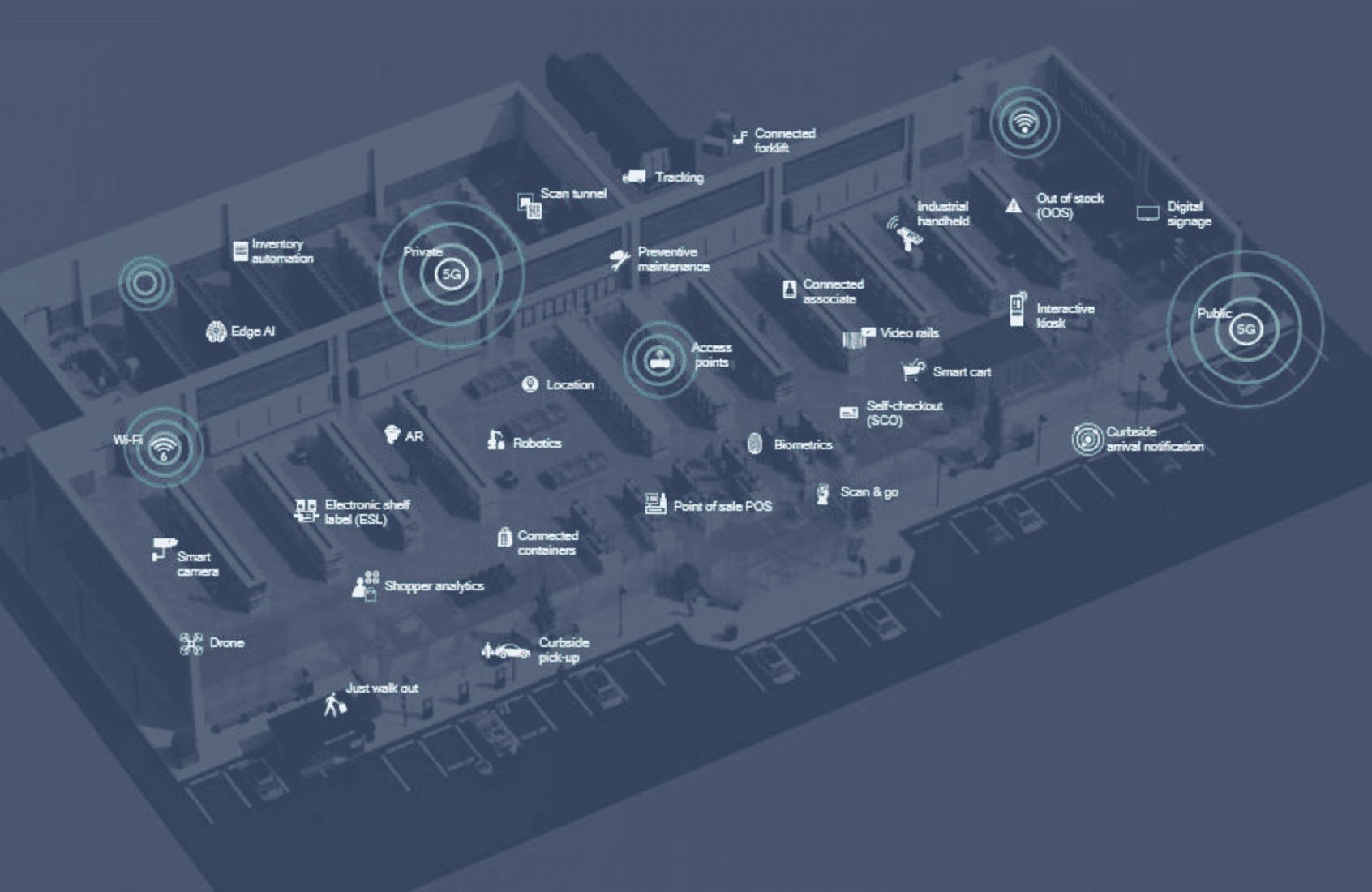Qualcomm Technologies has identified physical retail as a key growth sector for its IoT chip business. The sector has been severely impacted by the Covid-19 pandemic, it said, and requires urgent and drastic attention. Retailers can bring a new level of customer experience and operational discipline with the introduction of sundry smart IoT gadgetry, it said.
The San Diego firm is showcasing its wares at the National Retail Federation (NRF) show in New York City this week, embedded into smart displays, smart shopping carts, smart cameras, service robotics, and “shelf edge intelligence” solutions from various original device manufacturer (ODM) partners. “When it comes to interacting and servicing customers, the game plan needs to be revamped significantly,” the company reflected.
It is the same restaurants, hotels, airports, train stations, stadiums, hospitals, and offices, the company said. Post-pandemic, or at least post-lockdown, “customers expect a new level of experience”, it said. A statement acknowledged: “Retailers are [already] integrating key technologies to future proof infrastructures, adapt to changing environments, drive efficiencies and profitability, and meet evolving customer demands.”
But Qualcomm wants to take digital-change pyrotechnics further. It is presenting retail as a primary new-market for semiconductors; it wants to sell to retailers, and retail ODMs, in the way it is already selling in the smartphone, PC, automotive, and wearables market. A helpful ‘vertical’ parallel, or a useful parental category, is its work in the ‘smart cities’ space, which effectively works for Qualcomm as shorthand for urban enterprise-geared IoT tech.
The company’s smart cities accelerator, launched in 2019, brings together sundry tech providers to combine variously on Qualcomm-based as-a-service smart solutions for “modern cities, spaces, and enterprises”. These solutions are indexed and offered as part of Qualcomm’s IoT services suite. Really, retail might be considered as another Qualcomm edge-locale for new IoT gadgetry, alongside offices, stations, stadiums, and other venues.
A little over a year ago, Qualcomm released a ‘super-30’ suite of services that pulls together full-stack tech IoT componentry into a modular plug-and-play IoT solution for cities and city-based ‘verticals’. The chip-maker declared it has “cracked the code” for smart cities with the bundle, on the grounds it removes complexity from the bargain, and introduces a practical money-making matrix for tech sellers and tech buyers to rationalise their investments.
In Powerpoint-style, it has revealed “four pillars” for changing retail with IoT tech, whether based on new-fangled cellular (including private 5G, also mentioned in the small print about connectivity tech), or (more) common-or-garden Wi-Fi and BLE. These are: “contactless experiences, instant gratification, frictionless flow, and omnichannel support”. Its NRF show promotes IoT gadgetry for three groups: the customer (to “drive loyalty”), the store associate (to “digitize all workflows”), and the business itself (to “save time and money”).
Among the “cutting-edge” retail solutions aimed at shoppers themselves, it is hawking smart displays with biometric and AI technology for customer loyalty and payment devices, smart shopping carts and personal shopping devices for frictionless checkout, immersive multimedia displays with innovative user interfaces. Among those for store staff, it is showing service robotics, and advanced handheld mobile computers.
For the retailers, it is promoting “shelf edge intelligence” for automatic pricing and inventory updates and smart cameras and on-device AI processing to aid in-store analytics. The idea, it said, is to bring the “best of ‘online’ to the offline world, reducing friction at each stage of the retail journey”. The same logic, about migrating workloads from the cloud to the edge-cloud, applies to just about every ‘vertical’ market.
It explained: “That could mean robots cleaning store floors, devices monitoring logistics or tracking assets, AR devices training store employees, next-gen biometric payment solutions, and digitized shelf labels enabling ‘endless aisles’ – all coming together to bring the intelligent connected edge to retail… Through XR, Bluetooth, cellular, Wi-Fi, and private 5G networks – tying online to offline – these innovations are driving efficiencies that create more rewarding and relevant retail experiences for customers, store associates, retailers, and brands.”

Writing in a blog post, Ketal Gandhi, director of business development at Qualcomm, said: “[Shoppers have] gotten used to getting services at the click of a button from the comfort of their couches, so we will have to rethink the solutions offered in brick-and-mortar stores. We believe those four pillars are contactless experiences, instant gratification, frictionless flow, and omnichannel support.”
She added: “Online channels offer that gratification with a click of the mouse – customers now expect the same from physical interactions. So, it’s important that information provided to customers is accurate and consistent across multiple channels and devices… The challenge is to achieve this sort of consistency in real time… The devices in customer’s hands are connected and intelligent, with extreme processing power. So, it’s important to equip staff with devices that have the same mobile features, but that are rugged enough for enterprise use.”
But it’s not just about (it can’t be just about) souped-up smartphones, of course. Qualcomm wants to be “more than a leader in developing smartphones”. The IoT play – souping-up everyday things like cameras and shopping carts, by connecting and embedding compute processing software to run a range of smart applications – is where the action is. The action in retail, for a tech company selling miniature computing engines, is in self-service kiosks, with biometric check-ins and all kinds of verification tech.
It highlighted work with Taiwan-based Arima Group, whose new Arima 1625 display platform utilizes Qualcomm’s LTE-based QCS6125 processor to run integrated 3D time of flight (TOF) sensors (from Infineon and PMD Technologies), plus face recognition (from CyberLink) and palm recognition (from Redrock Biometrics). US-based Ordyx is utilizing the Arima 6125 platform in its restaurant POS units, to offer a biometrics checkout solution.
For Qualcomm, the action in retail is in 3D cameras and other security features, to “reduce the anti-spoof rate to one in a million”. It is in in-store self-checkouts using personal devices, it said, so customers do not even have to queue at the store checkout till, and “recommendation engines”, so customers get “curated experiences” without being overwhelmed. “In a quick service restaurant drive-through, a customer could be identified with biometric data, helping the restaurant present menu options based on the customer’s dietary preferences,” said Gandhi.
“Not only is it a contactless experience – it’s a personalized experience as well.”

